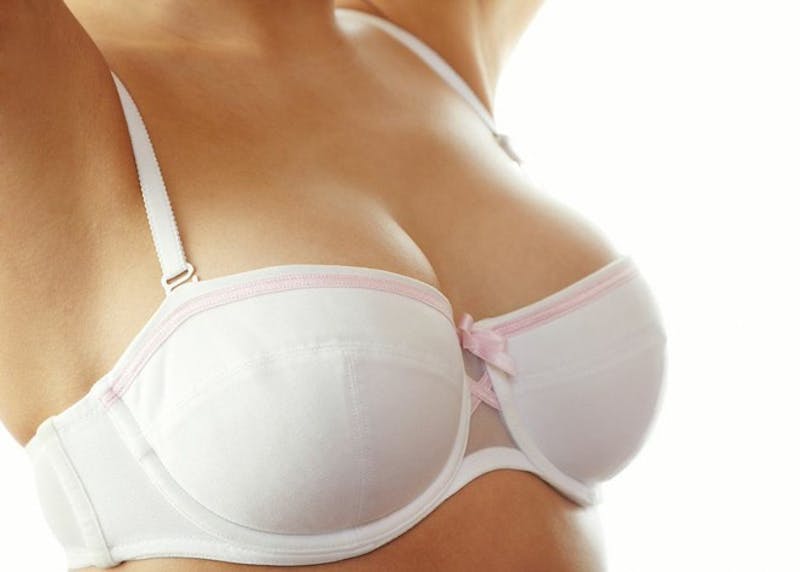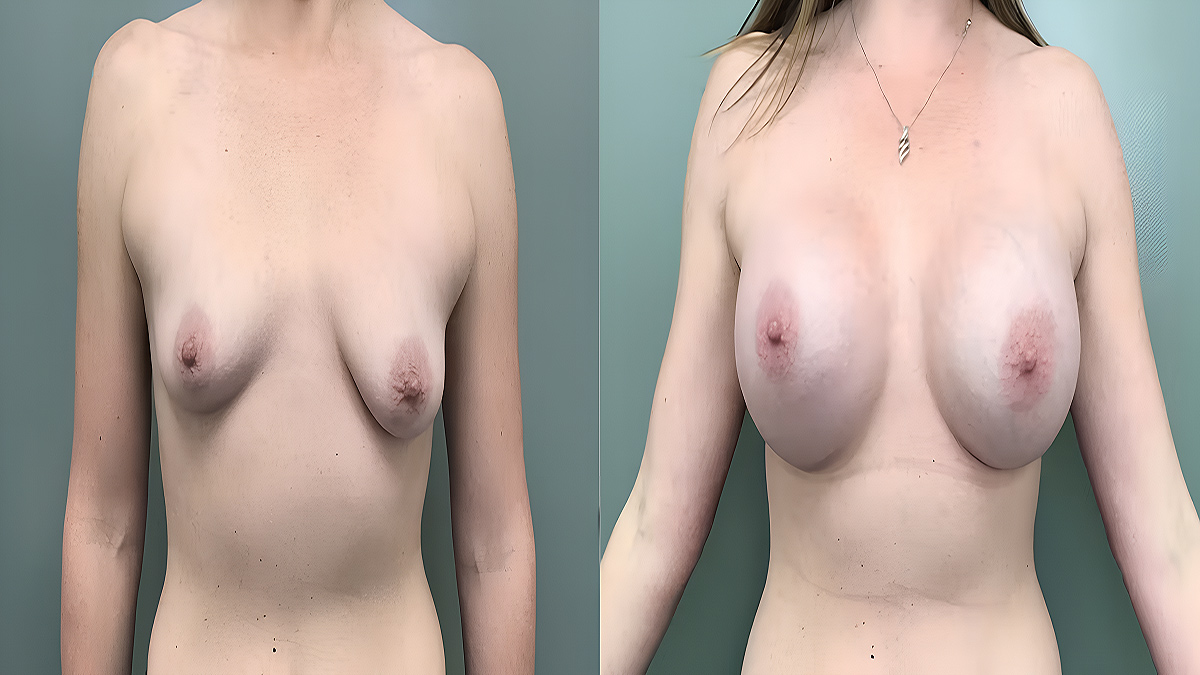
What do perfect breasts look like? It’s one of the most common questions patients ask - and one of the most misunderstood. There’s no single answer, and that’s the point. Perfection is personal. It’s not about copying someone else’s body. It’s about discovering what looks and feels right for you.
As a board-certified Plastic Surgeon practicing in San Antonio, Dr. Michael Baumholtz helps patients from their 20s through their 70s design breasts that suit their goals, lifestyle, and anatomy. Breast augmentation is never one-size-fits-all. It’s a tailored process where proportion, safety, and self-confidence come first.
Why One Size Never Fits All
Social media has shaped some wildly unrealistic expectations. Edited photos, filters, and angle tricks create a false idea of what breasts should look like. That’s not medicine - that’s marketing. Dr. Michael Baumholtz teaches his patients to focus on balance over trends. Perfect isn’t about symmetry, size, or looking like a model. It’s about whether your breasts feel right for your body and make you feel more like yourself.
Many women walk into consultations with feelings they’ve carried for years. One may say, “I want to be full but not fake,” reflecting a desire for enhancement that doesn’t overpower her natural silhouette. Another might say, “I want my breasts to look lifted - not stiff,” a subtle way of saying she wants to feel youthful, not unnatural. Others simply want to feel better in clothes - to fill out a top without drawing unwanted attention. These goals aren’t superficial; they’re about comfort, confidence, and identity.
What Defines an Aesthetic Breast?
There’s no universal formula for the perfect breast, but certain characteristics come up often in discussions around aesthetic ideals. Proportional shape matters greatly - breasts that suit your frame are more pleasing and sustainable than those that are simply large. Dr. Baumholtz uses precise measurements to determine a flattering width and profile that harmonizes with your chest and torso.
Upper pole fullness - a gentle curve above the nipple - is often associated with youthfulness and is commonly desired by younger patients or those who’ve lost volume. Lower pole volume, by contrast, gives the breast its rounded base and anchors its silhouette naturally. These curves should feel balanced and seamless.
Nipple position is also critical. Ideally, nipples sit at or slightly above the inframammary fold and point forward. A poor position can throw off even the best implant shape. And while perfect symmetry is biologically rare, the goal is visual balance. Enhancing harmony - not chasing perfection - is the mark of excellent surgical planning.
To move away from vague goals like cup size, Dr. Michael Baumholtz focuses on anatomical dimensions and 3D simulations. This approach gives each patient a realistic preview of what’s possible for her unique body.
The Look Most Patients Ask For
Patients often arrive with a vision shaped by years of imagining what they might look like “if only.” Some bring photos of models or celebrities; others use their own pre-pregnancy images. Dr. Michael Baumholtz uses tools like the VECTRA 3D imaging system and “wish books” to help patients turn these visions into structured goals.
During these planning sessions, patients often reveal they want more volume on top - but not too much. They ask whether they can keep their natural slope while enhancing projection. Some want dramatic cleavage, others prefer modest curves. These details matter. For example, high-profile implants or dual-plane placement can enhance upper pole fullness. Subtler projections might work better for athletic or lean builds.
Another common thread is restoration - especially among mothers. Many women aren’t seeking something they never had, but something they feel they’ve lost. Breast augmentation, for them, is less about transformation and more about reclaiming something personal.
The Shape You Choose
Every woman’s ideal shape is different, and surgical planning reflects that. Some want a distinctly augmented look with pronounced roundness and cleavage. Others want to look enhanced but “untouched” - the kind of result where friends notice you look great but can’t quite tell why.
Dr. Baumholtz explains these choices in detail. Round implants tend to give more fullness in the upper pole and a youthful silhouette. They are also less likely to rotate and are the most commonly used shape. Anatomic or teardrop implants are shaped to mimic the natural breast slope and may be beneficial in certain anatomical situations. However, they come with the risk of rotating and require texturing - an approach Dr. Baumholtz typically avoids for safety reasons.
He also discusses placement strategies. Dual-plane placement - where the implant sits partially beneath the pectoral muscle - offers a more natural transition and reduces rippling, especially in thinner patients. This technique allows for better coverage and long-term soft-tissue support.
What the Surgeon Adds
Breast augmentation is not just about selecting a product - it’s about building a plan. Dr. Michael Baumholtz approaches each consultation with a structured yet deeply personal method.
He begins by measuring the base diameter of the breast and assessing nipple position. These measurements set the parameters for safe, attractive implant sizing. He then evaluates the quality of breast tissue, previous surgeries, and skin elasticity. A patient with tight skin and no prior procedures has different options than someone with a history of weight loss or previous implants.
Photos and “wish books” help clarify goals. Dr. Baumholtz uses these references not as a checklist, but as a conversation starter. What does the patient like about this photo? What don’t they like? The VECTRA 3D system helps bridge this gap by simulating how various implants will look on the patient’s own body - helping to align expectations with reality.
He reminds patients that implant volume alone doesn’t determine outcome. Width, projection, and tissue compatibility all play major roles. It’s not about choosing a number - it’s about choosing a shape and feel that fits safely and beautifully.
San Antonio Patients from 20s to 70s.
Dr. Baumholtz serves a broad range of women in San Antonio - each with her own reasons for pursuing breast surgery. In their 20s and 30s, many women seek to add what nature didn’t provide. Some are entering motherhood and planning surgery around their childbearing years. Others are ready for a body they’ve long imagined.
In their 40s and 50s, patients often come to restore what life has changed. Breastfeeding, weight loss, and time can lead to sagging or volume loss. Some opt for augmentation alone; others combine it with a lift to reclaim youthful positioning. For them, it’s often about turning the page to a new chapter of confidence.
Even women in their 60s and 70s are choosing augmentation. They’re not chasing youth - they’re investing in themselves. Many say they finally have the time and perspective to do something they’ve always wanted. Age isn’t a limitation. Health, motivation, and good planning matter far more.
See Before and After Photos of Breast Augmentation Surgery
The Emotional Side of Breast Augmentation
This isn’t just about curves - it’s about how you feel when you look in the mirror. Many women arrive feeling disconnected from their bodies. They avoid mirrors, shy away from certain clothes, or feel unseen in their own skin.
After pregnancy, some feel “deflated” - a word used over and over again. Once-full breasts may now appear hollow or sagging. Others have always lived with noticeable asymmetry, making shopping and intimacy more stressful than they should be.
Dr. Michael Baumholtz creates a space where these concerns are heard, not dismissed. His San Antonio practice emphasizes privacy, trust, and long-term care. Many patients express relief at finally feeling understood - and surprised by how emotional the process can be. This isn’t about perfection. It’s about coming home to yourself.
Balancing Beauty and Safety
Bigger is not always better. Dr. Baumholtz consistently prioritizes long-term health over short-term appearance. Overly large implants can cause skin thinning, nerve damage, stretch marks, or implant malposition. These complications aren’t just cosmetic - they affect comfort, recovery, and revision needs.
When needed, Dr. Baumholtz uses absorbable mesh to reinforce internal support. Especially in thinner patients or complex revision cases, mesh acts like an internal bra. It provides additional structure, supports implant positioning, and helps preserve results over time. Every surgical plan is built around the principle: your body, your safety, your future.
FAQs About Breast Aesthetics and Augmentation
Can I bring photos to show what I like?
Yes - and it’s encouraged. Dr. Baumholtz uses these images to better understand your personal goals. However, rather than aiming to copy someone else, the goal is to translate those preferences into something that works with your unique anatomy.
Will breast implants look different on me than they do on someone else?
Absolutely. Implant size and shape interact with your chest wall, skin elasticity, tissue thickness, and overall body proportions. This is why Dr. Baumholtz uses 3D imaging to simulate outcomes tailored to your body.
How much control do I have over the final shape?
You have significant input. While your anatomy sets some limits, choices around implant profile, size, and placement technique will directly influence your final contour. Dr. Baumholtz ensures each patient understands these variables before making decisions.
Can implants fix asymmetry or tuberous breast shape?
In many cases, yes. Dr. Baumholtz has experience correcting asymmetries and congenital conditions through careful planning and implant selection. Sometimes this includes surgical adjustments to tissue or breast fold position.
What if I want something that looks subtle or very natural?
Natural-looking results are a common request. Through precise sizing, dual-plane placement, and implant selection that matches your tissue envelope, Dr. Baumholtz can help you achieve an enhanced yet understated look.
Do I need a breast lift with my augmentation?
Not everyone does, but if your breasts have sagging or the nipple sits below the fold, a lift may be recommended. Augmentation alone won't elevate the breast significantly if sagging is already present.
Will my idea of the perfect breast change over time?
It might. Life events, aging, weight changes, and personal preferences can all shift your goals. That’s why it’s so important to choose a surgeon like Dr. Baumholtz who plans for the long-term and prioritizes adaptability and follow-up.
Medical References
- The Search for the Ideal Female Breast: A Nationally Representative Study
Aesthetic Plastic Surgery / PubMed
https://pubmed.ncbi.nlm.nih.gov/35043247/ - Aesthetically Ideal Breasts Created With Artificial Intelligence: Morphologic Differences Based on Race
Aesthetic Surgery Journal Open Forum (Oxford Academic)
https://academic.oup.com/asjopenforum/article/doi/10.1093/asjof/ojae006/7593492 - An Ideal Female Breast Shape in Balance with the Body Proportions of Asians
Archives of Plastic Surgery / PubMed Central (PMC)
https://pmc.ncbi.nlm.nih.gov/articles/PMC6908378/ - Aesthetic Breast Surgery: Emerging Trends and Technologies
Journal of Cutaneous and Aesthetic Surgery / PubMed Central (PMC)
https://pmc.ncbi.nlm.nih.gov/articles/PMC6188320/ - The Influencing Factors of Breast Morphological Changes After Dual-Plane Augmentation Using 3D Scanning
Aesthetic Plastic Surgery / PubMed
https://pubmed.ncbi.nlm.nih.gov/39681691/?fc=None&ff=20241221224605&v=2.18.0.post9+e462414 - Public Perception of Ideal Breast Shape
Plastic and Reconstructive Surgery – Global Open / PubMed Central (PMC)
https://pmc.ncbi.nlm.nih.gov/articles/PMC8781772/
What “Perfect” Really Means
Perfect doesn’t mean flawless. It means feeling strong, beautiful, and authentic in your own skin. It’s the quiet confidence of putting on your favorite dress without hesitation. It’s the joy of seeing a reflection that feels like home.
Dr. Michael Baumholtz has spent his career helping women across San Antonio discover their version of perfect. As a board-certified Plastic Surgeon with extensive training and experience, he offers not only technical excellence but a deep respect for each patient’s individuality.
If you’re ready to explore what’s possible, schedule a consultation with Dr. Baumholtz. Bring your questions. Bring your hopes. He’ll bring the clarity, expertise, and compassion to help you decide what “perfect” really means - for you.
Learn more on his website.
Further Reading
- Read Dr Baumholtz Breast Augmentation Procedure
- Read more about What Do Perfect Breasts Look Like?
- Read more about Top 5 Benefits of Breast Augmentation



